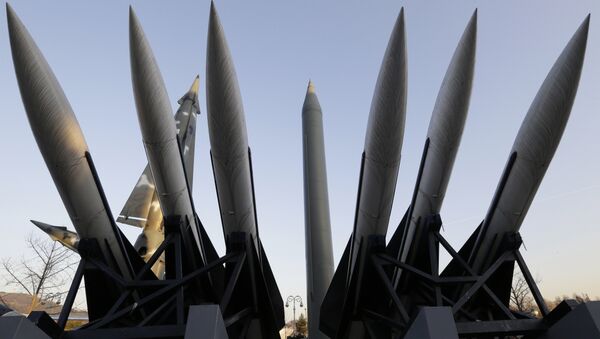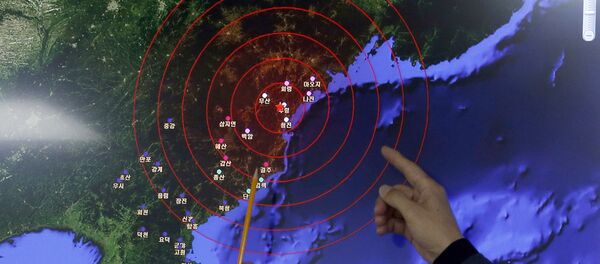In the wake of Pyongyang’s alleged nuclear test, US Republicans immediately seized an opportunity to criticize President Barack Obama.
"If this test is confirmed, it will be just the latest example of the failed Obama-Clinton foreign policy," presidential hopeful Marco Rubio said on Twitter. His sentiments were echoed by a number of other presidential candidates.
But Republicans haven’t just used Pyongyang’s hydrogen bomb claims as a springboard to attack political rivals. A number of legislators are also taking the opportunity to secure federal funding for new missile defense systems.
"For the long-term security of the region, for the reassurance of our allies, and for the safety of the American people, the United States must reinvest in missile defense and our military presence in the Pacific," reads a statement from Arkansas Senator Tom Cotton.
"The world is more dangerous when the United States is neither trusted nor feared."
Alabama Representative Mike Rogers also released a statement calling to "dramatically enhance trilateral missile defense." Along with Texas Representative Mac Thornberry, the congressmen urged the Obama administration to deploy a Lockheed Martin missile defense system to South Korea.
Over the course of Thornberry’s career, Lockheed Martin has contributed roughly $153,400 to his campaigns and Super PACs, according to the Center for Responsive Politics.
Using North Korea as a boogeyman to increase military funding is nothing new. But despite over $50 billion being spent on missile defense programs, the systems have proven largely ineffective. The $40 billion Ground-based Midcourse Defense system created by Raytheon and Boeing has failed consistently during trials, according to an investigation by the Los Angeles Times.
Similarly, the LA Times also found that Boeing, Northrop Grumman, and Lockheed Martin all secured $5.3 billion to develop infrared chemical lasers capable of destroying airborne missiles. The project was abandoned due to technical issues.
The Sea-Based X-Band Radar, the massive missile detector that looks like a floating Epcot dome, cost $2.2 billion to develop. The vessel has been deemed useless, largely because the sensitive radar system is highly susceptible to sea corrosion – a design flaw that is usually worked out in the very earliest stages of designing a seagoing vessel.
Even Raytheon’s $2.7 billion Joint Land Attack Cruise Missile Defense Elevated Netted Sensor System (JLENS), designed to detect incoming missiles along America’s eastern seaboard, has struggled to operate properly during trials. Last October, Raytheon suffered embarrassment when one of the massive JLENS blimps broke loose from its mooring and drifted across Maryland and Pennsylvania, pursued by a pair of US Air Force jets.
The necessity of these programs was justified by congressmen citing the North Korean nuclear threat. But before American taxpayers spend another vast sum of money on military projects that don’t work, maybe the US Congress should at least wait and see if Pyongyang’s claims are even true.





